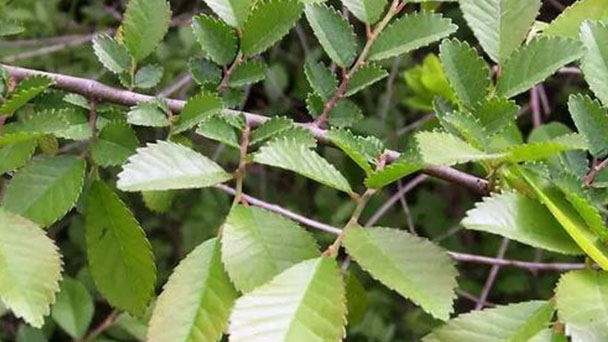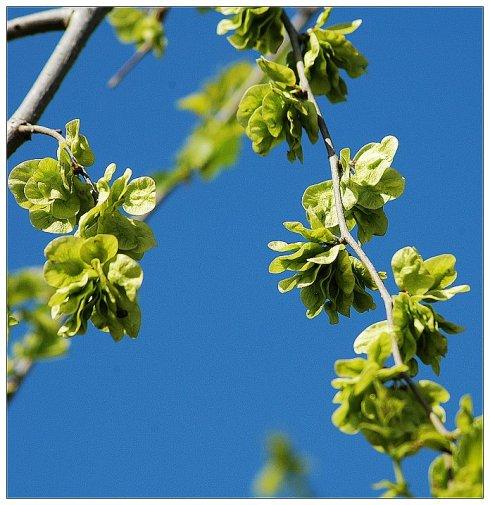Siberian elm profile
Written by Maggie
Dec 23 2020

Siberian elm, also called Ulmus pumila, is found in northeast, North, Northwest and southwest provinces of China. It is also found in Korea, former Soviet Union and Mongolia.Born on slopes, valleys, sichuan, hills and sand dunes below 1000-2500 m.
Siberian elm picture

Siberian elm morphological characteristics
Siberian elm is a deciduous tree, up to 25 m tall, 1 m DBH, shrubby in a dry desert. The young tree bark is smooth, grayish brown or light gray, bark of large tree dark gray, irregular deep longitudinal split, coarse; Branchlets str glabrous or hairy, yellowish gray, light brownish gray or gray, thin yellowish yellow or yellow, with loose bark holes, no expanded cork layer and raised cork wings; In winter buds are subglobose or ovoid, bud scales abaxially glabrous, margins of inner bud scales with white villous. Elliptical leaves are ovate, long ovate, elliptic-lanceolate, or ovoid, lanceolate, 2 -- 8 cm long, 1.2 3.5 cm wide, apex acuminate or long acuminate, base oblique or nearly symmetrical, on one side of the wedge to the circle, the other side of the circle to half a heart shape, adaxially glabrous, smooth back childhood pubescent, later glabrous or partial vein axils with tufted hairs, margin serrate or single blade, lateral veins 9-16 per side, petiole 4 -- 10 mm, usually only have pubescent above.Flowers first leaves open, fasciculate in axils of shoots.
Samara suborbicular, thin round oval, 1.2 2 cm long, in addition to the gap at the top the stigma surface coat, rest in glabrous, core part located in the central part of samara. The top is not close to or near the gap, the same color and fruit wing. Before and after the mature, it’s light green, white and yellow, after persistent perianth glabrous, 4 shallow cracks, lobe margin hairy. Siberian elm stem is shorter than perianth, 1-2 mm long, and was (or loose) pubescent. Flowering period: 3-6 months (late northeast).
The growth habit of Siberian elm
Siberian elm was born on slopes, valleys, sichuan, hills and sand dunes below 1000-2500 m. Siberian elm is a positive tree species, light, drought resistant, cold resistant, barren resistant, not choose the soil, adaptability is very strong. Siberian elm has developed roots, wind resistance, strong soil retention, strong resistance to pruning.Fast growth, long life. Siberian elm can withstand dry and cold climates and moderate salinity, but can not withstand water and humidity (can withstand rainy season waterlogging). Siberian elm is anti - polluted, high dust retention ability.
Siberian elm grows well in alluvial soil with deep, fertile and well-drained soil and loses Plateau. It can be used as an afforestation or "four side" afforestation tree species in northwest desert, North China and Huaibei plain, hills and northeast barren mountains, sandy land and coastal saline-alkali land.
The distribution range of Phallus elm
Siberian elm elm is distributed in northeast, North, Northwest and southwest provinces of China. It is cultivated in the lower reaches of the Yangtze River, North Korea, the former Soviet Union, Mongolia also has distribution.

Siberian elm propagation mode
Siberian elm is mainly used for sowing propagation. Grafting, tillering and cuttage propagation are also available. Seeds should be picked and sown with a weight of 7.7 grams per thousand seeds and a germination rate of 65-85%. Cutting propagation survival rate is high, up to about 85%, cutting seedling growth fast.
Sow
Harvest the seeds when the green turns pale yellow in mid-April, and sow as soon as the dips dry. General use drill row spacing 30 cm, covering soil 1 cm compaction, because the germination is high temperature dry season. It is best to cover 3 cm soil moisture. When germination with a rake block flat. About 4 kilos per acre. The height of the seedlings is about 10cm to 10-20cm, and the spacing between the seedlings and the rows in the second year is 60× 30cm. After that, the seedlings will be thinned to the appropriate density according to the size of the cultivated seedlings.
In order to improve seed quality, seeds should be selected from healthy mothers aged 15-30 years. When the seeds turn yellow and white, they can be harvested. Early harvest, seed blight, affect the germination rate;If gathered late, the seeds are easily blown away by the wind. Seeds should not be exposed to the sun after harvesting, but should be naturally dry, gently remove the seed wing, to avoid damage to the seeds. The sandy loam with water source, good drainage and thick soil layer should be selected as the nursery. The sowing method may be furrow or ridge sowing. Before sowing, prepare the ground to be fine, 4, 000-5, 000 kilograms of organic fertilizer applied to an acre, shallow turn after filling foot water.
Sow 3-5 kg in acre, open a shallow ditch to seed into, covering soil 0.5-1 cm, covering soil too deep seed germination is difficult to find out. After sowing, it should be slightly suppressed to facilitate the close combination of seeds and soil and moisture conservation. When the soil is dry, do not pour water over the head, can only spray the ground, so as not to harden the soil or wash away the seeds.6 to 10 days after germination, more than 10 days after the seedlings were unearthed, the seedlings began to thin when the seedlings grew to 2-3 true leaves, seedlings were fixed when the seedling height was 5-6 cm, 30,000 to 40,000 seedlings were left in the acre area. Water in time when thinning seedlings, strengthen intertillage weeding seedling stage, July to early August can be applied to compound fertilizer 10 kg. Every half a month, apply 2 times, and we can also apply new foliar fertilizer. No ammonia nitrogen fertilizer shall be applied after the middle of August, and soil moisture shall be controlled to facilitate the lignification of seedlings.
Cuttings
After autumn deciduous leaf and spring before germinating can be cuttaged.
Prepare ground to make a bed: no matter autumn is inserted or spring is inserted, nursery ground should turn over deeply (25 centimeters or so) fine whole, apply sufficient base fertilizer, soil disinfection.Spring cuttings, the best winter irrigation plantar water, the next spring, deep tillage bed.
Cutting ear: Autumn cuttage, should be with the pick and shear with the insertion; Spring cuttings, seeds can be winter storage, also can be taken with the insertion. Select more than 0.5 cm strong strips, grafted into 15-20 cm long cuttings, the upper shear mouth should be cut flat, the lower shear mouth should be cut near the eye into a horse ear shape, which is conducive to cutting rooting.
Cuttage: Cutting rows 30 cm apart and plants 20 cm apart. With ditching cuttings, scion exposed to the ground, overlying soil collapse, irrigation permeable.
Early irrigation: Water influences cuttage survival. Cuttings can take root after a month, so in the inserted before rooting, and there should be more irrigation, to keep the soil moist, promote the survival of rooting.
Timely wipe the bud: White elm bud strong, more bud, when the bud to 2-3 cm or so, choose to keep a healthy bud, the other bud all cut off, in order to prevent the consumption of nutrients and water cuttings, conducive to rooting. Because germination is unearthed in the morning and evening, so in addition to the bud should be carried out many times.
Weeding with loose soil: Weeding with loose soil can keep the moisture content, increase the ground temperature and promote the survival of rooting, but it is necessary to prevent root injury and shoot injury.
Grafting
In the middle of March, when the bud germinated, cut off the smooth part of the rootstock about 2 meters long, the scion about 5 cm long, keep 2-3 full buds in each ear, cut a horse ear shape at the bottom of the ear, the face is 2.5 cm long. The face is not deep half of the ear thickness, a partial wedge shape is formed under the back of the shaved face. The cut scion is inserted vertically between the cortex and the xylem and then tightly wrapped with a plastic wrap.

The main value of Siberian elm
Siberian elm is for furniture, vehicles, farm tools, utensils, Bridges, construction, etc. The bark contains starch and viscosity, ground into powder called elm skin. Siberian elm is edible in mixed flour and used as raw material of vinegar. The branch skin fiber is tough, can replace hemp to make rope, gunny bags or make artificial cotton and papermaking raw material; The young samara can be steamed when mixed with flour. The old fruit contains 25% oil and can be used in medicine and the light chemical industry. Leaves are used as fodder. Young fruit can eat, bark, leaves and samara are medicinal, can calm the mind, benefit urine. Siberian elm is also a strong anti-toxic gas (carbon dioxide and chlorine) tree plant body containing beta-solids alcohol, plant alcohol, bean zibo alcohol and other kinds of zibo alcohol and tannin, gum, fat oil.
Latest Updated
- Benefits of Bugleweed - 7 Science-backed Health Benefits
- Bugleweed Dangers & Side Effects - Is It Poisonous?
- How to Plant Evergreen Trees - What You Should Know
- When to Plant Evergreens - Grow Guide for Evergreen Trees
- 12 Wonderful Evergreen Shrubs for Your Garden
- 12 Popular Evergreen Plants with Pictures for Beginners
- When And How To Prune A Lilac Bush Like a Pro
- How to Grow & Care for Lilac Vine (Hardenbergia Violacea)
- Japanese Lilac Tree (Syringa Reticulata) Care & Propagation Guide
- Shumard Oak Pros and Cons - What to Know
Popular Articles
- Winter maintenance of Antirrhinum Majus
- How to Grow Terminalia Mantaly Tree
- How to Grow and Care for Crossostephium Chinense
- How to grow Antirrhinum Majus in spring
- Peristeria Elata (Dove Orchid) Profile: Info & Care Guide
- Underwatered Snake Plant (Sansevieria Trifasciata) - Signs And How To Fix
- How to Care for Brazilian Jasmine Plant (Mandevilla Sanderi)
- How to Grow & Care for Graptopetalum Purple Delight in Summer
- Rosa Chinensis (China Rose): Plant Growing & Care Tips
- How to Care for Baby Sun Rose (Aptenia Cordifolia)